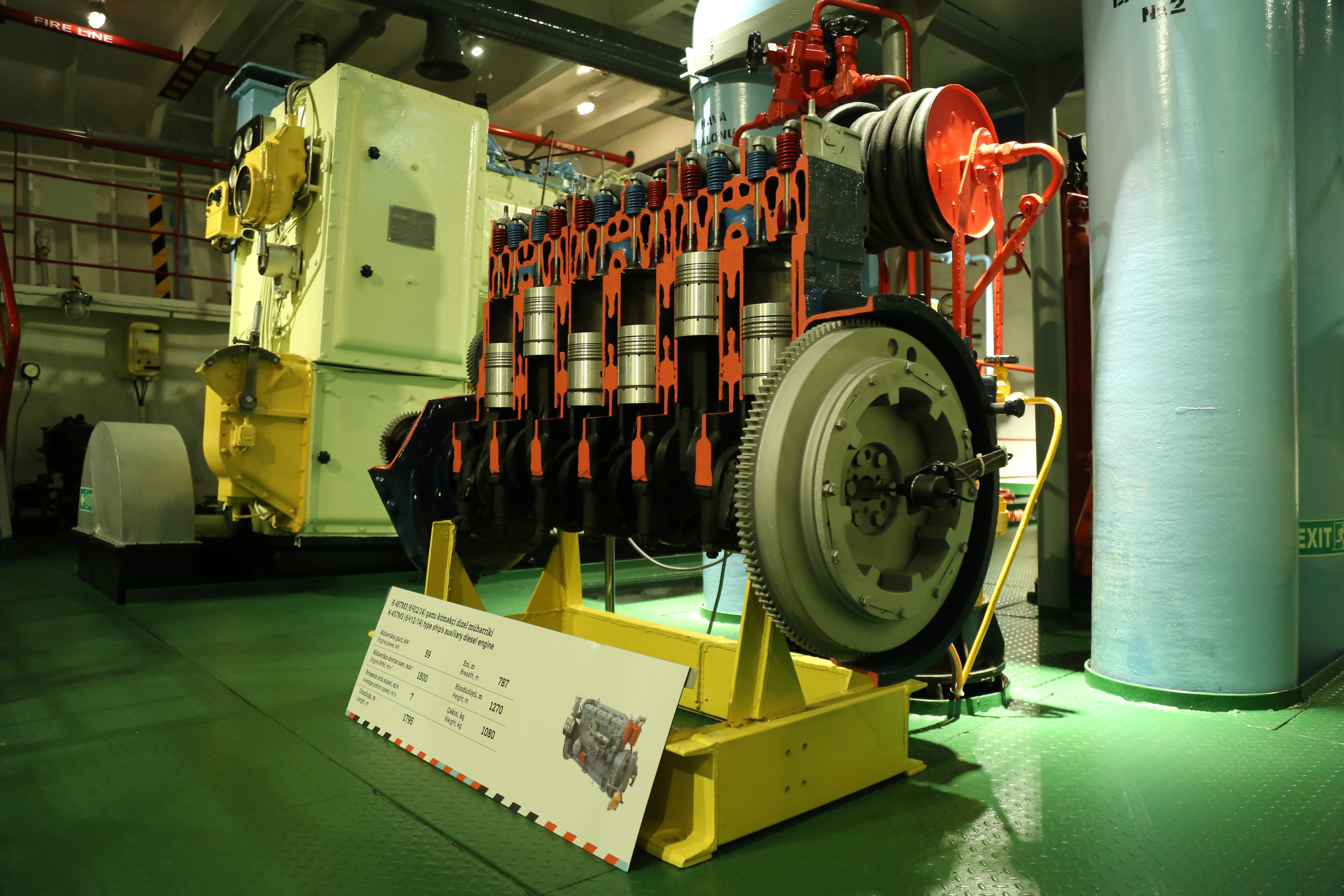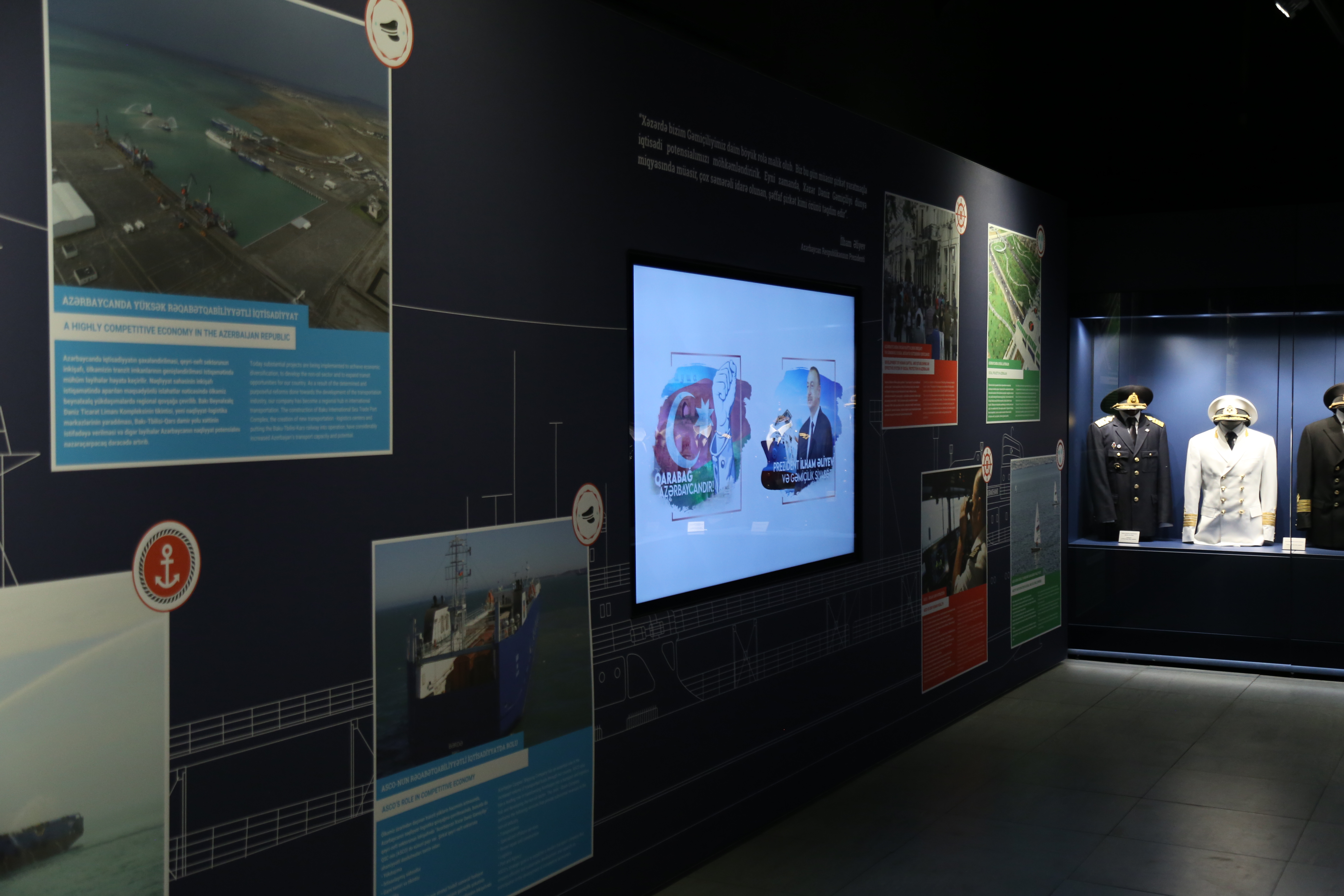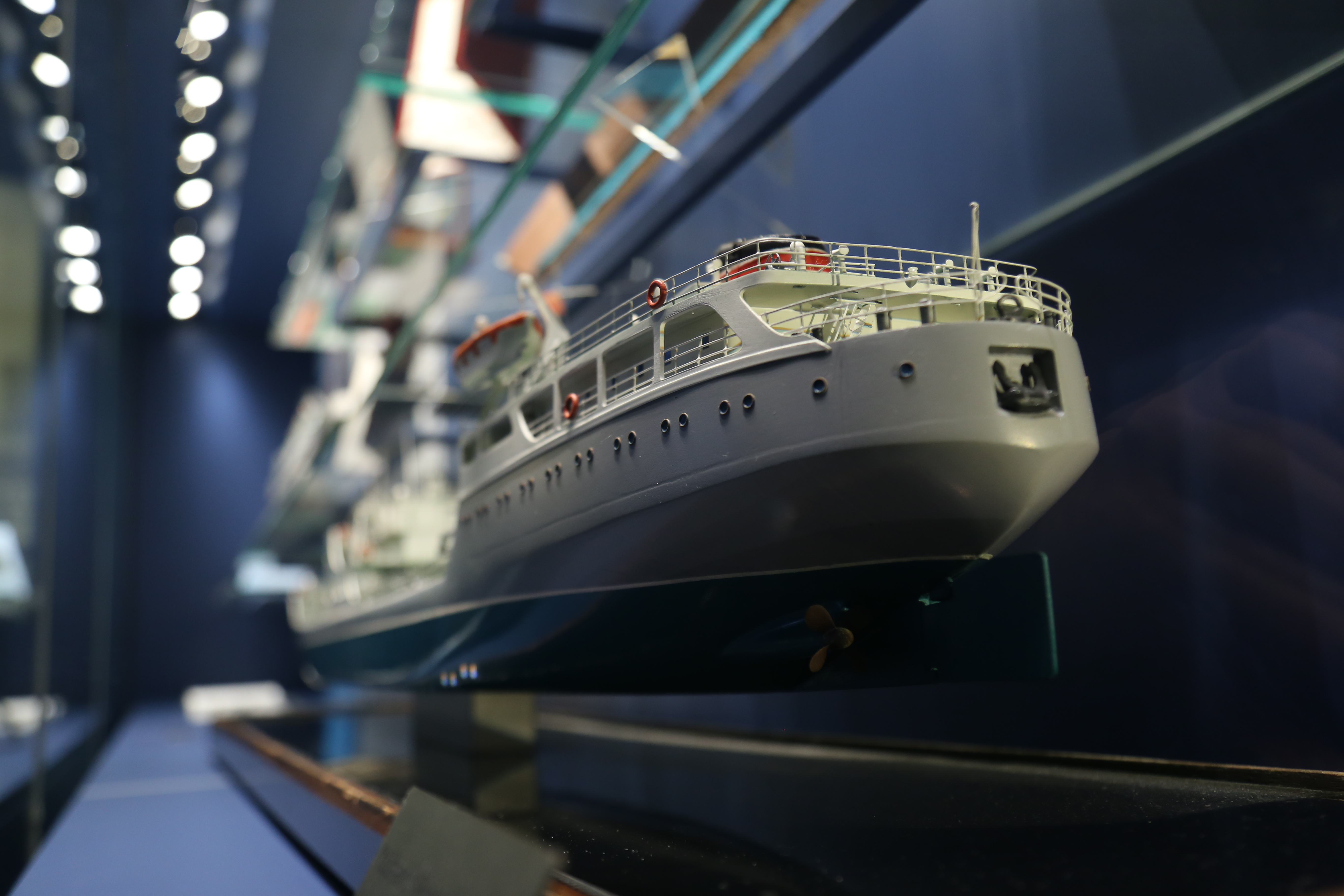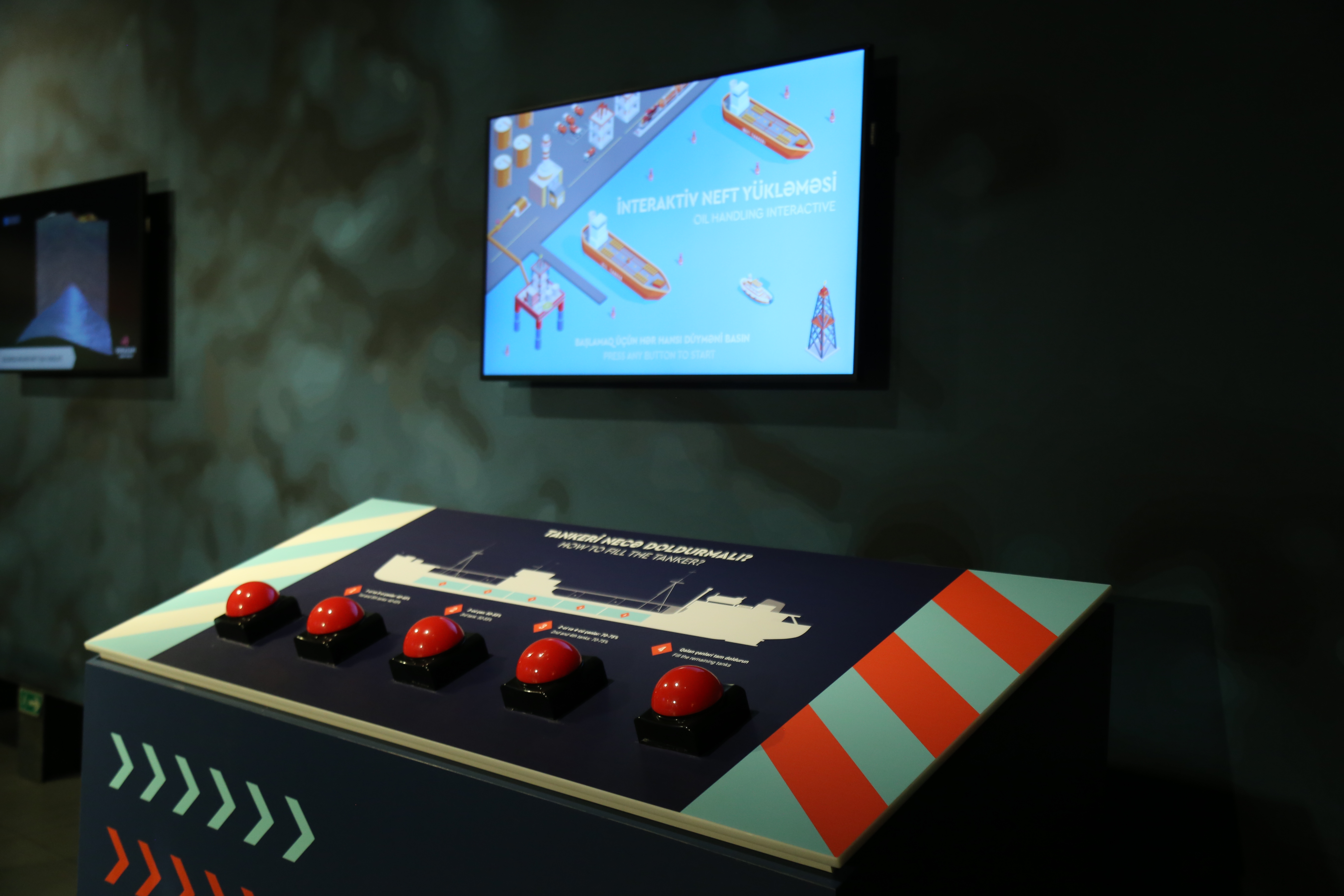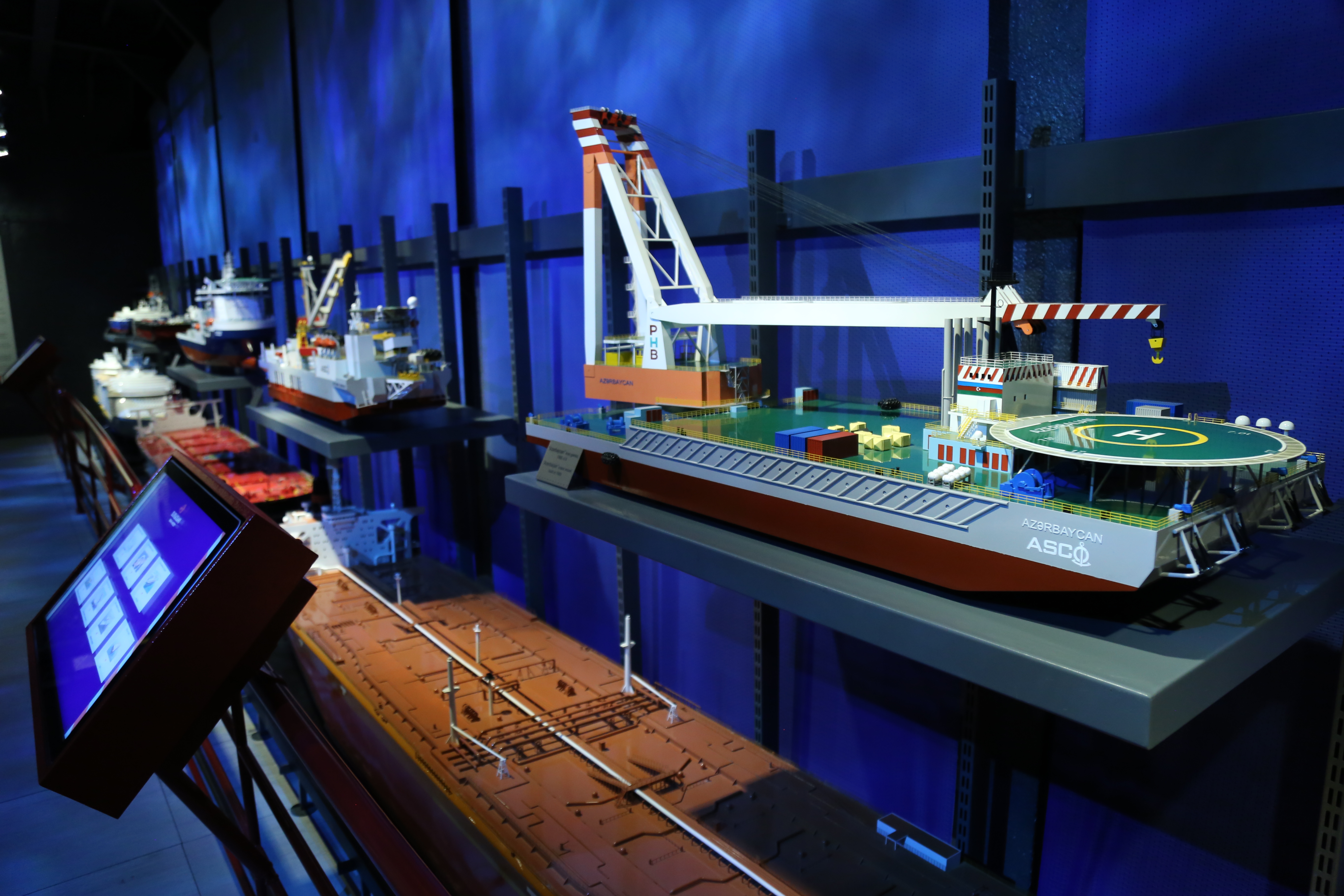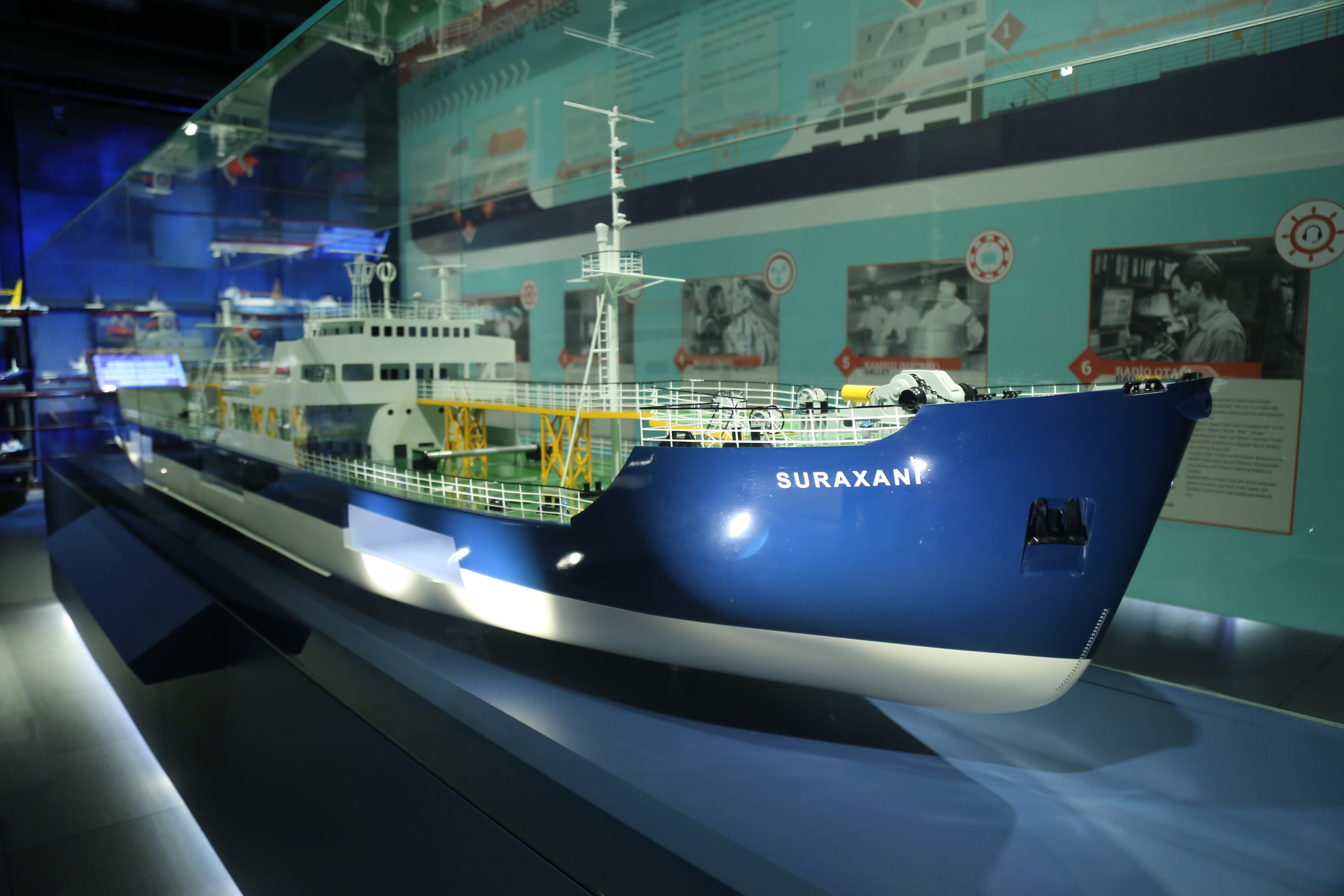The world’s first tanker museum opens in Baku
In Azerbaijan, a new period in the development of shipping, which has ancient traditions, is associated with the name of the national leader Heydar Aliyev and his worthy successor, President of the Republic of Azerbaijan Ilham Aliyev. It was the purposeful policy of the national leader, implemented after he was appointed the head of Azerbaijan in July 1969, that contributed to the formation and development of ASCO – Azerbaijan Caspian Shipping CJSC, as a shipping company. Today, this policy is continued successfully.
Along with the development of shipping in our country, great attention is paid to the preservation of the traditions of seafaring, as well as to the study and development of its history. In recent years, the Azerbaijan Caspian Shipping Company (ASCO) has implemented a number of projects in this area. Local and foreign archives have been investigated, important work was implemented to preserve and transfer the received valuable documents and exhibits to future generations.
In 2018, the Azerbaijan Caspian Shipping Company – one of the oldest enterprises in our country with a glorious history, celebrated its 160th anniversary. Within the frame of the anniversary celebration, there were written scientific books and documentaries based on historical research.
Another significant step in this area is the creation of the world’s first tanker museum – a museum on the ship Surakhany. The museum, created with the support of the head of state, Mr. Ilham Aliyev, combines the past, present, and future of seafaring with ancient history.
It was not a random choice to create the museum in the tanker Surakhany. This vessel was one of the largest and most modern tankers of its time. Sailing through the waters of the Caspian Sea, the Surakhany ship played an important role in the history of Azerbaijan’s oil transportation by sea, which began with the world’s first tanker named Zoroaster. The tanker Surakhany with a length of 123.5 meters and a deadweight of 4696 tons belongs to the type of ship “Engineer A. Pustoshkin”, launched for the first time in the Caspian Sea in 1957. Until recently, the tanker was used as an oil refinery station of the Shipping. In 2017, it was decided to turn the vessel into a museum.
To become a museum, the ship underwent a major overhaul and reconstruction work. For this purpose, the human and technical resources of the ASCO Bibi-Heybat Ship Repair Yard and Khazar LLC were mobilized. More than 2000 shipwrights were involved in the repair and reconstruction of the hull and other parts of the ship.
The experience of such countries as Great Britain, the Netherlands, and Turkey, which have ancient traditions of shipping, was also applied. In order to meet international standards, ASCO cooperated with more than 100 influential foreign and local companies. The British company Freeman XP presented the concept and design of the project. Having implemented many successful projects, this company has 90 years of experience in this field. The Dutch company Hypsos, which is distinguished by its professionalism in the design of world-famous museums, scientific centers, and various-themed pavilions, was responsible for the project design.
There have been applied various innovative solutions in the halls of the museum. Here, visitors will get acquainted with the history of the Caspian Sea, oil production in Absheron, the development of shipping, ships considered to be one of the first in the world, sea giants, navigation facilities that are integral attributes of shipping, nautical knots with a history of about 5000 years, as well as equipment used to operate ships.
The journey through the world’s only museum tanker begins from the reception hall. Here, the captain and his first mate greet visitors and provide them information about the ship’s crew members and their duties. The hall also contains exhibits that allow guests to get acquainted with safety and rescue equipment on ships.
The Mooring and Anchoring Operations Hall is located on the tier below the main deck. The hall displays information on the role of the anchoring device and chain on the ship and the principles of mooring. On a special game manipulator located in this hall, one can also dock the ship. In this hall, guests of the museum can learn about nautical knots and try to tie a knot on the ropes.
The Spirit of the Caspian hall, which consists of two parts, reflects the history of the development of the Caspian Sea and the entire Caspian region from a million years ago until today. At the same time, the hall displays many interesting exhibits related to Gobustan – the pearl of world history, confirming the existence of ancient traditions of navigation in our country.
Moreover, the first unique 360-degree screen in Azerbaijan provides visitors with the opportunity to become direct “participants” in what is happening on the video. Thus, guests go through the ancient and modern history of the Land of Fire in an unusual way. Upon leaving the video room, visitors can touch the unique exhibits related to the shipping of the 18th-20th centuries.
The Ship and Shipping hall exhibits a model of the tanker Surakhany. The model is 5 meters long and demonstrates the ship down to the smallest details. The hall also presents information about ships of this type. Here, one can watch a video describing the process of creating the museum ship and showing unusual footage that reflects all the moments of large-scale repair and restoration work. Besides, the hall displays models of the largest ships in the world.
Visiting the Navigation and Communication hall, guests will get acquainted with various exhibits that were used in navigation in ancient times and the Middle Ages. They will also see three models of lighthouses known throughout the world. A special interactive installed in the hall lets send information using Morse code. On the navigation table, created for the museum ship Surakhany, visitors will learn about the routes, external communications, and navigation of ships sailing in the Caspian. Also, a special “Flag” interactive will help a wide audience to study signal flags and their functions easily.
Going through the Cargo Transportation hall, visitors will better know about the purpose of cargo ships and the peculiarities of container transportation. Using the model located here, one can carry out loading and unloading operations and get acquainted with one of the world’s largest container ships “OOCL Hong Kong”. There are also models of the modern port of Alat and the Baku Shipyard in the hall. The Oil Wall stand displayed here shows the history of the Caspian oil. The hall includes the interactive game on the different ways of carrying out loading and unloading operations.
In the hall named Solidarity in Values and Commitment to Development, the visitors of the museum will make a journey into the 160-year-old glorious and rich history of the Azerbaijan Caspian Shipping Company.
This hall of the museum displays the chronicle of the heroism of Azerbaijani sailors during the Great Patriotic War and the tragic events of January 20, 1990. Also, the interactive book presented here reflects the invaluable merits of the national leader Heydar Aliyev in the development of the Azerbaijan Caspian Shipping Company. Also, visitors will see a board reflecting the unbreakable ties of the Shipping Company, considered a national treasure, and the state, a board “Karabakh is Azerbaijan!”, as well as an info-monitor reflecting large-scale projects implemented by President Ilham Aliyev in the field of seafaring.
The engine room demonstrates the “heart” of the ship – the main engine, as well as the auxiliary engine, pumps – the devices that set the ship in motion. These exhibits are presented in a way similar to what they looked like many years ago. Here, wearing VR (virtual reality) headset, visitors can travel back to the middle of the last century and experience the daily work routine of the crew members in the engine room.
The next comes the Gallery of Sailors. It demonstrates legendary sailors, as well as the reconstructed cabins of the crew members and the galley of the ship Surakhany, which look exactly the same as they were in the 60s. Here one can also see household appliances and items that were used on the Surakhany tanker.
The captain’s bridge, radio and navigation room, which are important posts for operating the ship Surakhany, have also been reconstructed to their original state. In this part of the museum, visitors can see the operating and all other equipment of the tanker dating back to the middle of the 20th century.
One of the interesting expositions of the museum tanker is a corner exhibiting malacofauna, corals, and other flora and fauna specimens. The collection, assembled from oceans and seas, will arouse great interest among visitors.
The museum also has a restaurant where visitors can taste both national cuisine and seafood dishes.
The opening of the world’s first museum tanker in Baku will provide local residents and the growing number of tourists with the opportunity to learn the history of the Caspian Sea and shipping in our country, the heroic work of our brave sailors. The museum tanker Surakhany will play the role of a bridge connecting the past and the future of Azerbaijan Shipping Company with ancient traditions of seafaring. At the same time, this museum will turn into one of the new symbols of our capital Baku that uniquely combines history and modern time.
